52 Countries in 52 Weeks, Chapter 21: Greece, Turkey & Egypt (part 1)
In Which I Am Blown I Away By The Wonder Of Many Monuments, Except When They Keep Me Up At Two In The Morning
Living next to the pyramids is very distracting.
Intuitively, you would think living next to the pyramids for a couple of days with your own private bed would be expensive, as is the case for most major tourist attractions across the world.
But the area surrounding the complex is a bit dodgy, and most pyramid visitors do guided trips originating from resort hotels. So if you want to, you can stay right next door for 40 dollars, with the three Giza monuments and the great sphinx right there, staring at you all night.
It is very distracting.
For one thing, there’s about 500 metres between the pyramids and the entry to the complex; enough distance for a perfect postcard view of all of them you can examine to your heart’s content.
This is a problem though, because pyramids are inherently more interesting than anything else you could be doing.
Checking your email? The pyramids are staring you in the face. Trying to eat? Oh look, there’s the single remaining seven wonders of the ancient world that is still standing. Considering what non-pyramid things to do the next day? What if instead you considered the oldest conspiracy in the world and think about who put those stones there in the first place?



During my stay, there was also a small concert happening in the pyramid’s plaza (which apparently happens a few times a year), which kept going until 2 in the morning…and yet, what was I going to do? Phone up the pyramid’s manager and tell them to be quiet?
They have existed for 5,000 years. I have ranked the best ice cream stores in Canada’s second most important English-speaking city.
And if it was difficult to focus at most hours, at sunset it caused total paralysis. Over the course of an hour, the thing that is the source of all our life and power sinks behind the monuments that first defined human achievement, all while the sky turns yellow and orange and red and dark purple and finally black, another day turning over at the site where our species first created something that would stand the test of time.
We go to see the pyramids because they are very big.
But I think their ultimate power is making us feel very small.

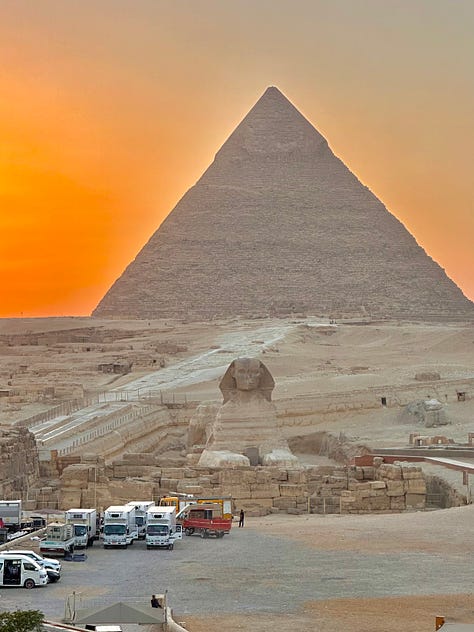

After my Mediterranean Cruise, I had a hectic little civilizational chapter planned.
From the heights of Greek antiquity in Athens, I would go to Istanbul before heading to the ancient Turkish city of Ephesus, then to Jordan to see stunning Petra*, followed by Egypt for three days around Cairo and four days on cruise from Aswan to Luxor.
All in all, a very tidy two weeks of ruins and temples and mosques and pyramids**, contrasting nicely with the previous 10 days of cruise ship decadence.
*In reality, the Petra trip didn’t happen because of airlines suspending flights to Jordan due to increased bombings involving Israel.
**There were also very interesting things involving cities and urbanism in my travels that I want to touch upon, but I’ve broken up this travel diary into two parts to talk about them, along with the country I went to after this
Writing about ancient wonders is different than writing about cities or liveability or trains or tourism or the way history and geography interact or more trains or housing affordability or hey aren’t trains cool or some of the other themes I’ve touched on (like trains!), because viewing a monument is a relatively static experience.
We can all explore a city in different ways. People have been awed by Paris for centuries, but there are still thousands of unique interactions to find in new combinations that will impact the distinct way each person views the city.
Every person visiting the pyramids or the Parthenon gets more or less the exact same view. We all take the same photo and all say “it was stunning” to our friends back home. There is nothing about them that hasn’t been said by millions of others over thousands of years.
Instead, they act as a Rorschach test to our own lives and considerations about the past; and to our expectations of the moment itself.
In that sense, my viewing of the monuments was impactful because of the nature of this journey and the cumulative impact of the moment.
This year has plenty of goals, and one big overarching one is to see the breadth of humanity.
Most of that comes through dynamic interactions across different cultures, in cities big and small, in areas rich and poor, and seeing all the ways that people live in their individual and collective moments.
But there’s something intensely powerful about getting to reflect on the thousands of years that have brought our species to this point, at places that were the building blocks of civilization.
I care deeply about local democracy (my job would be extremely painful if i didn’t); to see some of the first ballot boxes used by Athenians to decide on the people who would represent them in leading their community was legitimately emotional.



I think the ability to people of diverse cultures and backgrounds to live together is one of the most important traits in society; to see the ways that has played out in Istanbul over thousands of years was intensely rewarding.
Over the course of this trip I’ve gone to more than 100 museums, and they collectively tell the tale of a planet where communities grinded for thousands of years to go from carved rocks (museums love showing off their primitive carved weapons even though they look the same everywhere) to rudimentary homes and boats, to artistic evidence of distinct vibrant cultures (where most people still died in poverty before 40 under the rule of an inbred king), to the incredibly bountiful and connected world we live in today.
And then you go to the Valley of the Kings or the Abu Simbel temple, and see amazing displays of art and wealth and architecture created while 99% of the rest of the world was still in diapers, and you are overwhelmed with their comparative power.
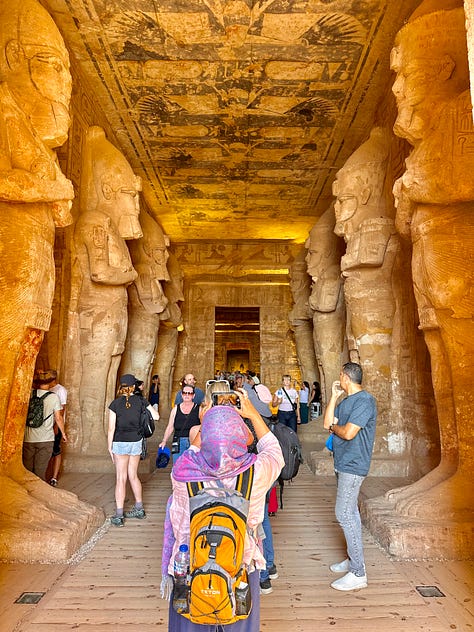

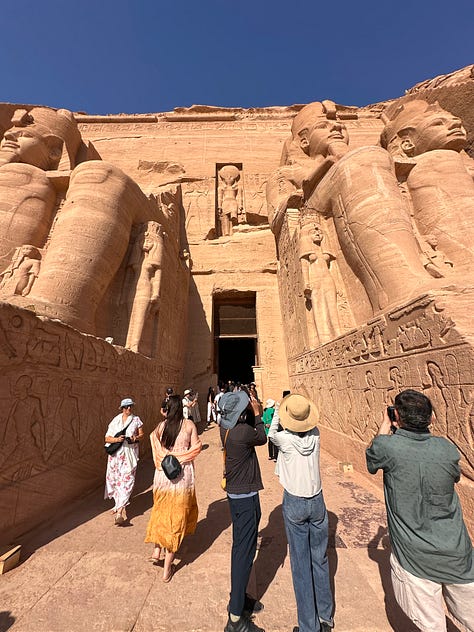
My favourite site might have been in Istanbul at the Sultanahmet Square, a plaza that used to be a Roman-era Hippodrome, where over the centuries monuments were built or imported to showcase the city’s might.
In the span of 200 or so metres, there’s an obelisk built in Egypt in the 14th century BC. A Greek column built to celebrate their victory over the Persians in the 5th century BC. The Hagia Sophia, an immaculate 5th century AD Byzantine church converted into a mosque. And the famous Blue Mosque, built in the 16th century by the Ottomans, that stands as the prettiest and most intricately designed of them all.
It’s the only place I know where you can stand in one spot and see great works from four different civilizations across four different millennia, in the organic locations where they’ve sat for centuries, all while the buzzing of a massive city goes on around it.
What a testament to the world we have built. What a testament to the world that we live in.

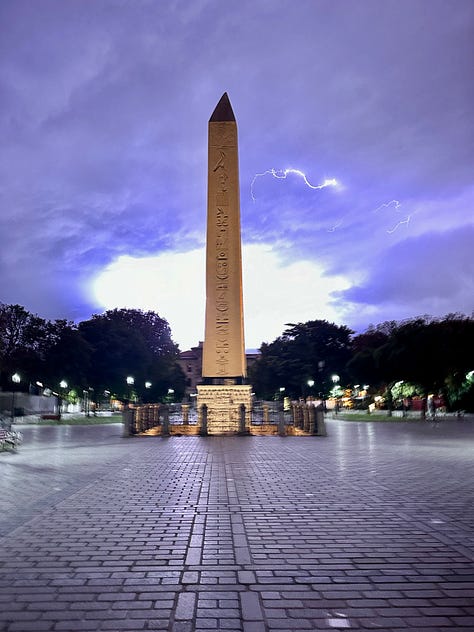
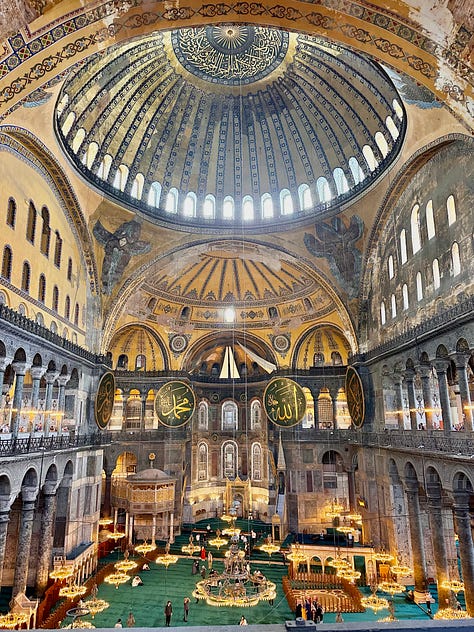
For all the worldly historical reasons why I enjoyed my two weeks from Greece to Egypt, the biggest joy might have been connected closer to home.
Ephesus is a fascinating and beautiful ancient city. An important outpost for both the Greek and Roman civilizations over many centuries, it has stayed remarkably in tact two thousand years later, from its stadiums to libraries to family homes.
While it’s a massive tourist attraction for Turkish people, it’s fairly off the radar for many Westerners, likely because it’s an hour from any big city and not in the homeland of the civilizations it’s associated with.
It wasn’t off the radar for me though, because 30 years ago two of my aunts decided to travel around the world for most of a year. Seven-year-old Justin thought this was about the coolest thing ever, getting updates from his Grandma on where they were, and looking at all the new countries they were visiting in her big blue atlas.
On that trip, one of those aunts met a young Turkish man, whose family ran a small hotel in the centre of a small city. They fell in love, married, and eventually moved back to Canada a few years after the birth of their first kid.
Over the years, I thought about that trip, and a bunch of McElroys made the trek to the ANZ Guesthouse Pansiyon, some 9,978 from our home town of Victoria.
It was neat to see the ruins.
It was much more neat to be a tiny part of a story of two families.


There may not be anything about the aesthetic experience of great monuments I can say that is new, but there is practical advice to the experience I think is worth talking about.
In a perfect world, you would probably want to see a great monument in comfortable weather, at your own pace, being able to focus on the spaces and not having to navigate around thousands of other people, be given context whenever requested, and have a nice photo at the end to remember the excursion by.
Unfortunately, the more famous the monument, the more impossible this becomes.
Going at the time of year where you aren’t boiled alive means places are completely packed. Signing up with a tour means getting more information (and less stress about navigating ticket systems), but also being hurried along from spot to spot, less able to appreciate the moment at your own rhythm. Go solo, and you risk passing by an amazing detail with an interesting backstory and no idea what you’re missing.
So, some basic advice:
If you can see the monument in the first or last hour before it closes, do so. It will be emptier than the rest of the day, which is good for both appreciating the space with relative quiet, but also being able to get through it at a quicker pace, giving more time to enjoy the rest of the day. Plus, most of these sites are in full view of the exposed sun, which is often going to be above 30 degrees at midday, which is no fun for anyone.
Figure out how much you value independence, and in what ways. For example, I hate the idea of driving, so doing a river cruise to see the Egyptian temples around Aswan and Luxor was the only real option. Similarly, at the Parthenon and historic sites in Istanbul, the physical spaces were so small that you might as well take part in a guided tour: if you’re stuck in line, you may as well learn some things.
If you enjoy wandering at your own pace and in your own thoughts, one of the best monuments to do so surprisingly might be one the most famous. The Giza Pyramids are on a massive site that can take hours to walk through, where you can get full separation from people in spite of the crowds. There were many things I loved about the experience, but one of them was just waking up in the morning in my hotel, crossing the street, and just sort of ambling around a giant dessert that defines an entire era, pausing whenever I felt like it to reflect on the moment in time.


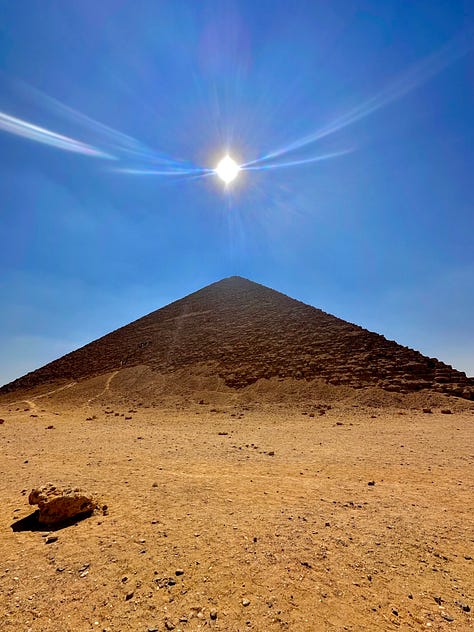
And if you go to go to the pyramids, become a pyramid snob. Don’t just go to Giza: instead, head to the Dahshur and Saqqara complexes on the edge of Cairo. Both of them were built before Giza (the Djoser pyramid at Saqqara is actually the oldest one in the world), which provides important architectural context for how the ones at Giza were built, with interiors that are more intricate than the raided ones at Giza. Because they’re a hour or so drive out of Cairo and aren’t *The Official Pyramids*, there’s like 90% less people there, despite being just as fascinating in slightly different ways. So check them out!
Finally, if you’re travelling solo and you want a photo, here’s my guide, since folks regularly ask me about my Instagram posts: find a middle-aged person or couple without children that look like they have some experience travelling. Ask “can one of you take a photo?”, and 98% of the time they’ll say yes, and if it’s a couple, 80% of the time the better photographer of the two will volunteer. Be comfortable waiting for a minute until the right person comes along, and if the photo doesn’t satisfy you, be comfortable waiting another minute to try again with a different person or couple. If there’s tons of people around, be comfortable waiting another minute for a gap in the crowds so the focus of the photo is clearly the monument and whatever gratuitous pose you’re making to demonstrate your joy/detachment/hotness or whatever you think is most important.
It may seem a little self-involved (because it is). But if you spent thousands of dollars and a week of precious vacation time with this image in the back of your mind, it’s silly not to spend three minutes to preserve the moment that will last the rest of your life.
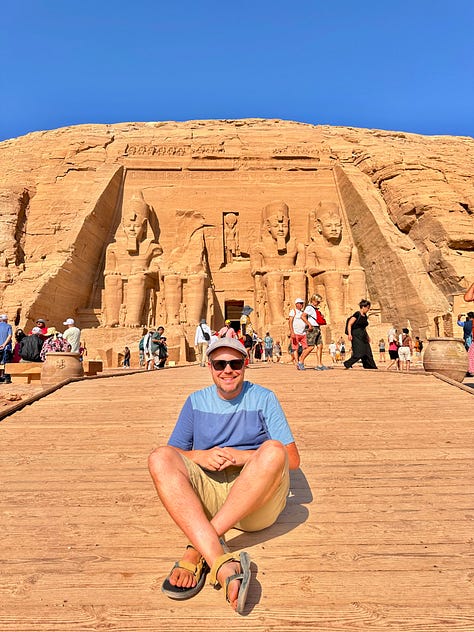
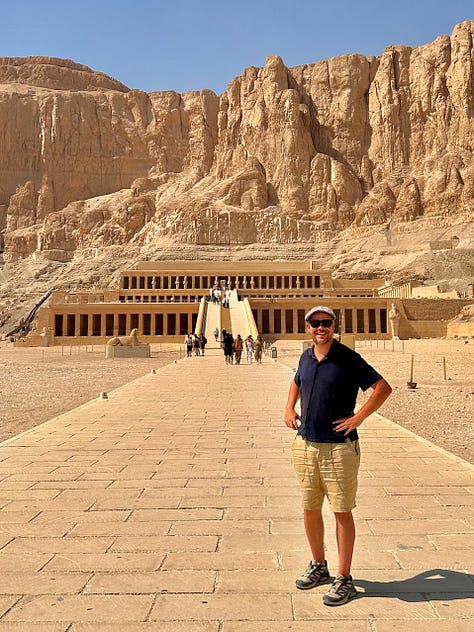






What a great read. Great description of your travels. Makes me feel like I'm right there beside you.
Left Kelowna and now in the Dominican Republic for the winter....will keep reading.
PS. Great article on Horgan #RIP.
This was a great read - it feels like a big revelation or realization, really big, is just out of reach yet right there waiting. And then great practical advice too! Nice one.